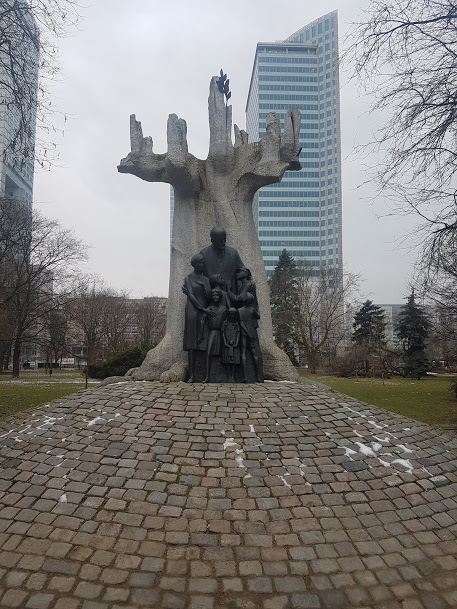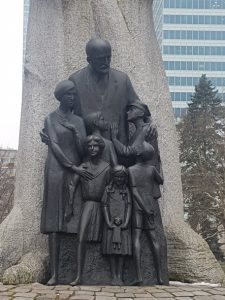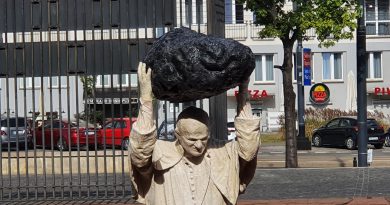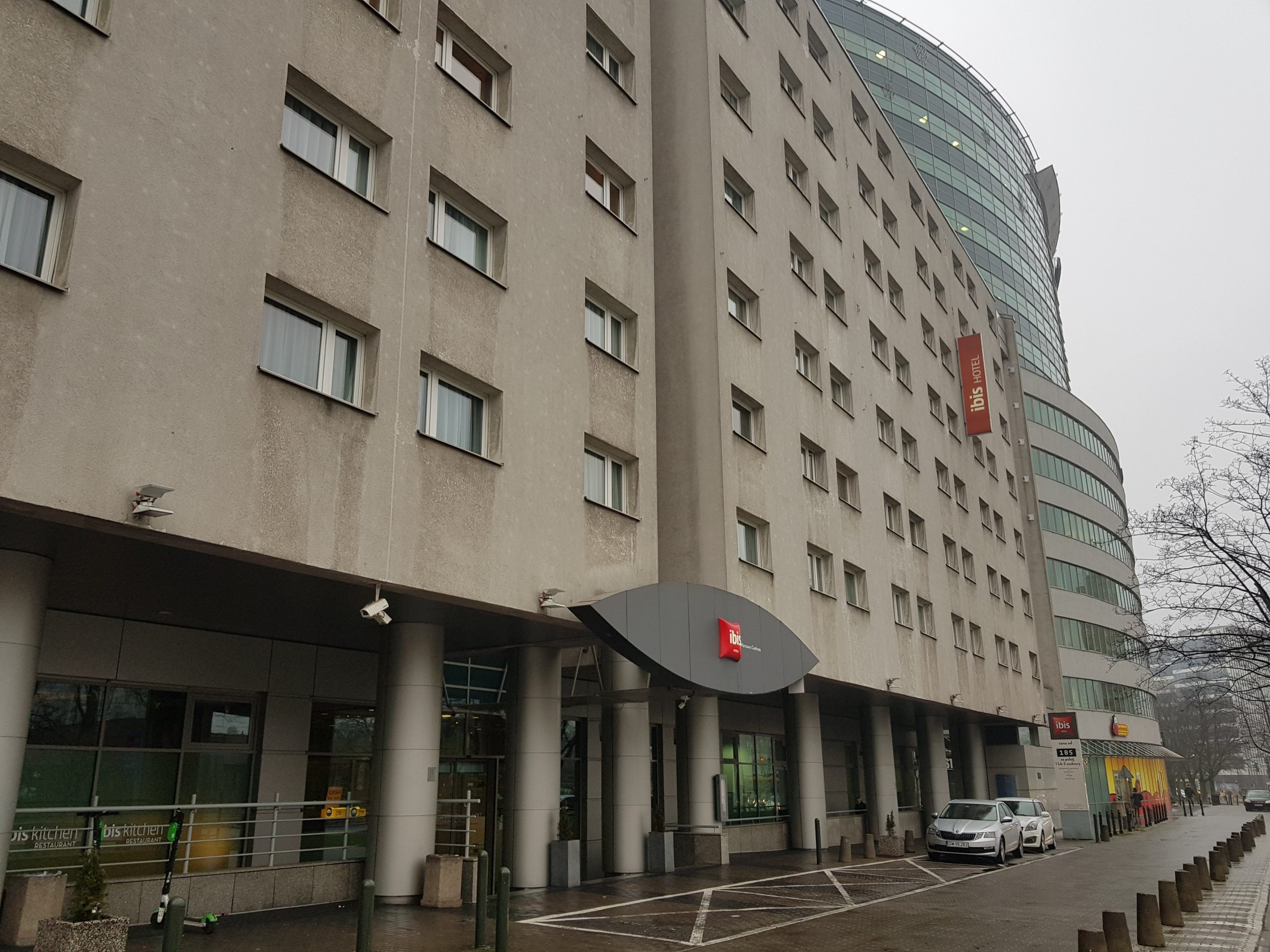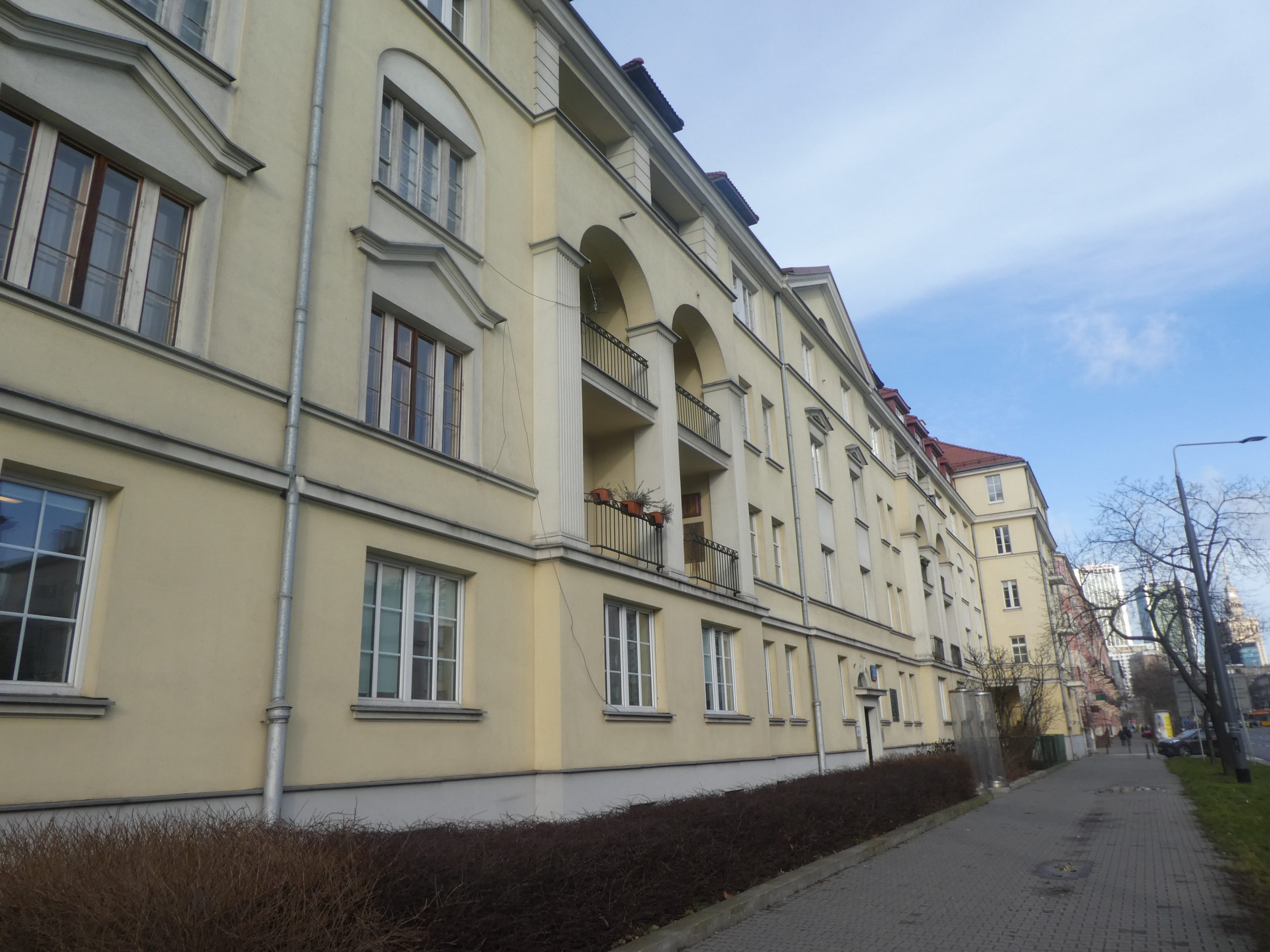Warsaw – Monument to Janusz Korczak
Located at ul. Świętokrzyska, in the shadow of the ridiculous Palace of Culture and Science, this monument is to the author Janusz Korczak. His real name was Henryk Goldszmit and he was not just an author, but also an educator who was heavily involved with orphanages. Korczak served as a lieutenant in the Polish army during the First World War and he tried to join the army once again at the outbreak of the Second World War, but he was 61 years old and thought to be too old.
Korczak ran an orphanage when the Second World War began and he went with it when it was moved inside the Warsaw Ghetto, but he did his best to protect the children in his care. When the ghetto was liquidated in August 1942 all of the children, around 192, were rounded up to be sent to concentration camps and Korczak had two opportunities to leave the ghetto, both of which he declined. It’s not known what happened to Korczak and the 192 orphans, but it’s thought that they were all murdered at Treblinka.
Władysław Szpilman saw Korczak and the children being marched out of the ghetto and wrote:
“He told the orphans they were going out into the country, so they ought to be cheerful. At last they would be able to exchange the horrible suffocating city walls for meadows of flowers, streams where they could bathe, woods full of berries and mushrooms. He told them to wear their best clothes, and so they came out into the yard, two by two, nicely dressed and in a happy mood.”
Some of Korczak’s writings in the ghetto survived, and they aren’t in the form of a descriptive diary, but are more of a literary bent. I particularly liked this text, of which there’s no shortage of existentialist meaning. The PDF of his book is available here.
“I know that many are dissatisfied at my clearing the table after meals. Even the orderlies seem to dislike it. Surely they can manage. There are enough of them. If there were not, one or two always could be added. Then why the ostentation, the obstinacy, and even maybe I’m nasty enough to pretend to be diligent and so democratic.
When I collect the dishes myself, I can see the cracked plates, the bent spoons, the scratches on the bowls. I expedite the clearing of the tables and the side table used for the little shop, so that the orderlies can tidy up sooner. I can see how the careless diners throw about, partly in a quasi-aristocratic and partly in a churlish manner, the spoons, knives, the salt shakers and cups, instead of putting them in the right place. Sometimes I watch how the extras are distributed or who sits next to whom. And I get some ideas. For if I do something, I never do it thoughtlessly. This waiter’s job is of great use to me, it’s pleasant and interesting.”
The monument was unveiled in 2003 and was jointly funded by the Shalom Foundation and the Janusz Korczak Association. One of the underlying principles of the monument was to ensure the words of Korczak weren’t forgotten:
“Sorrow is too cold for the children, so they quickly run into the sun of joy”.
His sacrifice meant that many children had just a little bit of hope in their final days.

